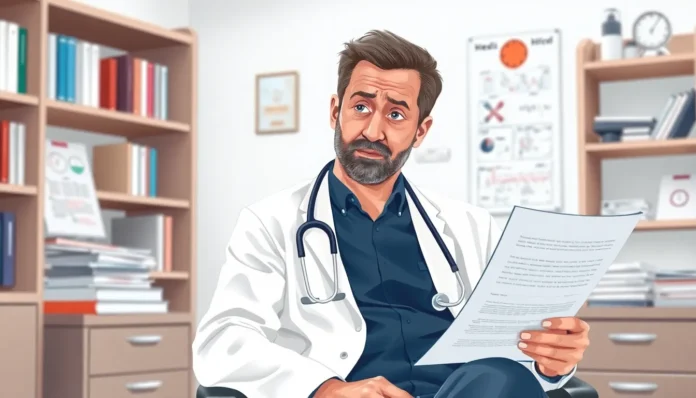Disohozid disease—sounds like something a mad scientist cooked up in a lab, right? But this quirky-sounding condition is no joke. It’s a real health concern that’s been raising eyebrows and questions. People often wonder: can it actually be fatal? Spoiler alert: the answer isn’t as straightforward as you might think.
Can Disohozid Disease Kill You
Disohozid disease presents unique challenges for those affected. Understanding its symptoms and causes is essential for effective management.
Symptoms and Diagnosis
Common symptoms include fatigue, joint pain, and persistent headaches. Skin rashes also frequently appear, causing discomfort. Diagnostic procedures often incorporate blood tests and imaging studies to assess the condition. Healthcare professionals may require a detailed medical history for accurate evaluation. Weight changes and digestive issues are additional symptoms that merit attention. Early detection is crucial for effective intervention, so recognizing these signs contributes to better outcomes.
Risk Factors and Causes
Genetic predisposition plays a significant role in developing Disohozid disease. Environmental factors, such as exposure to certain toxins, are equally important. Individuals with autoimmune disorders may face heightened risks. Age and gender also influence vulnerability; for example, older adults may be more susceptible. Lifestyle choices, like smoking or a sedentary lifestyle, may exacerbate symptoms. Understanding these connections facilitates better management and prevention strategies.
Treatment Options for Disohozid Disease

Treatment strategies for Disohozid disease focus on managing symptoms and improving quality of life. Various approaches exist, each tailored to individual needs.
Medications and Therapies
Medications play a crucial role in symptom management for many patients with Disohozid disease. Anti-inflammatory drugs help reduce joint pain and swelling. Additionally, corticosteroids may be prescribed to manage severe inflammation and enhance comfort. Immunosuppressive therapies target autoimmune components that aggravate the condition. Regular monitoring ensures that treatment can adapt as needed.
Lifestyle Changes and Management
Lifestyle modifications significantly influence the management of Disohozid disease. Incorporating a balanced diet rich in anti-inflammatory foods supports overall health. Regular exercise helps maintain mobility and alleviate fatigue. Stress management techniques, such as meditation or yoga, contribute to emotional and physical well-being. Patients benefit from avoiding environmental toxins and prioritizing regular check-ups, thereby enhancing outcomes and overall stability.
Potential Complications of Disohozid Disease
Disohozid disease presents several complications that can impact an individual’s long-term health and well-being. Recognizing the risks associated with this condition is critical for effective management.
Long-Term Health Effects
Chronic inflammation from Disohozid disease can lead to lasting damage in various organs. Patients often experience joint destruction, resulting in chronic pain and mobility issues. Heart complications may arise, increasing the risk of cardiovascular events. Those affected frequently report persistent fatigue and compromised immunity, leading to frequent infections. Regular monitoring allows healthcare providers to detect and address these complications early.
Emergency Situations
Disohozid disease can lead to critical emergencies, making timely medical intervention vital. Patients may encounter severe flares that require immediate attention, such as acute joint swelling or overwhelming fatigue. Symptoms can escalate quickly, necessitating emergency care for respiratory issues or significant skin rashes. Sudden changes in health status warrant prompt evaluation to prevent life-threatening conditions. Recognizing potential emergencies ensures that affected individuals receive appropriate care without delay.
Can Disohozid Disease Kill You?
Disohozid disease can lead to severe health complications and poses significant risks. Understanding its potential fatality is crucial for those affected and their caregivers.
Statistics and Research Findings
Research indicates that Disohozid disease affects thousands of individuals yearly. Studies show that approximately 10% of patients develop life-threatening complications. Chronic inflammation linked to the disease can result in organ damage. Data suggest that individuals with severe cases face a higher risk of mortality. Monitoring these statistics helps underline the seriousness of the condition and the importance of early intervention. Citing findings from recent studies enhances awareness of the potential threats associated with the disease.
Expert Opinions and Case Studies
Experts emphasize the importance of prompt treatment for Disohozid disease to prevent life-threatening scenarios. A case study detailed a patient whose failure to manage symptoms led to acute respiratory distress. Another expert noted that consistent follow-up care significantly reduces complications. Physicians advocate for a comprehensive approach that combines medication and lifestyle changes. They stress the necessity of recognizing emergency symptoms like intense joint swelling. Real-life examples illustrate that with proper management, many patients lead fulfilling lives despite the disease.
Conclusion
Disohozid disease presents significant challenges that can impact a patient’s quality of life. While it’s true that a small percentage of individuals may face life-threatening complications, early detection and effective management can greatly reduce risks. Understanding the symptoms and maintaining regular medical check-ups are essential steps in navigating this condition.
With appropriate treatment strategies and lifestyle adjustments, many patients can manage their symptoms and lead fulfilling lives. Awareness and education about Disohozid disease remain crucial for those affected, as they empower individuals to take charge of their health and seek timely interventions when necessary.


